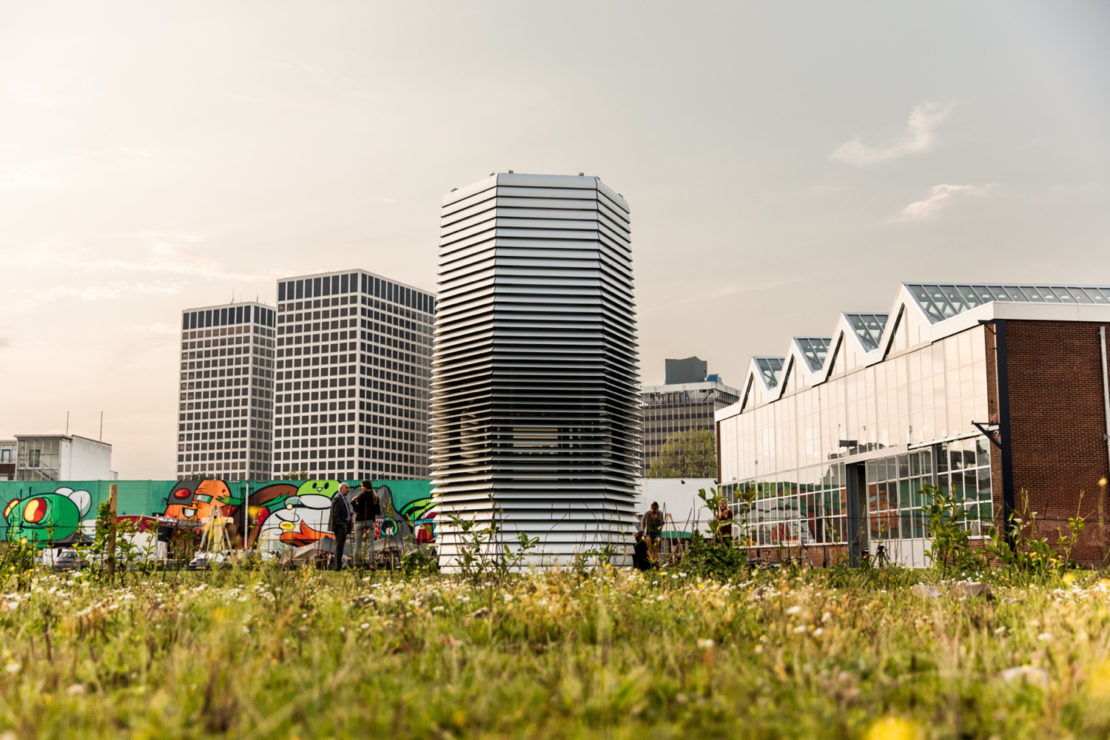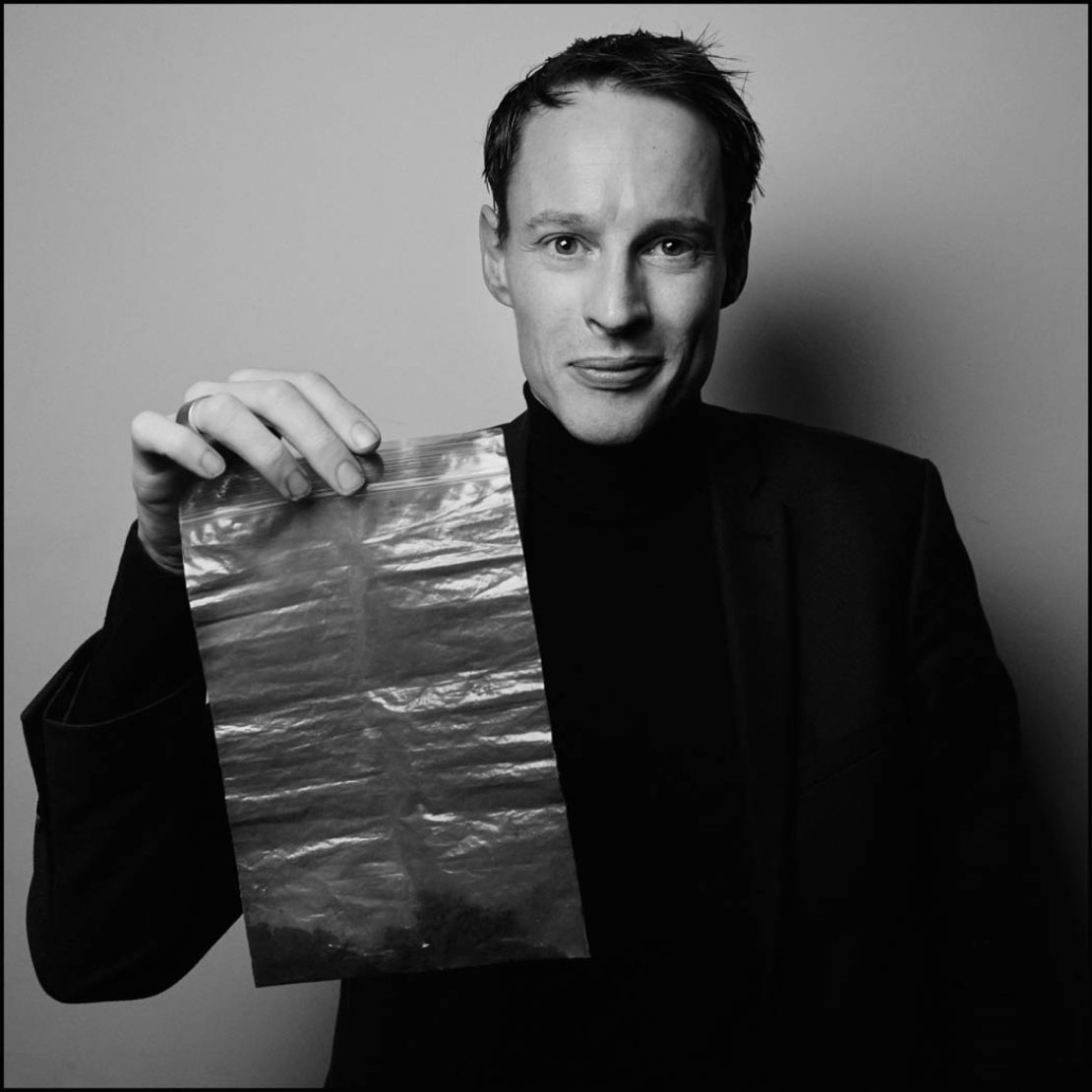
The Dutch designer prototyping the future
Daan Roosegaarde has built the world’s largest vacuum cleaner, to suck soot from the sky.
The 'Smog Free Tower' is currently sitting outside Roosegaarde's design studio in Rotterdam. But last month he raised €113,153 on Kickstarter, so he can tour the structure around the world – to Beijing, Mexico City, Los Angeles and others – as a travelling exhibition to prompt discussion around how to make cities less polluted. "It's the beginning of a smog-free movement," says the 35 year-old Dutch designer.
Working with researchers at Delft University of Technology and European Nano Solutions, a Dutch green tech company, Roosegaarde has developed what is literally a large electric vacuum cleaner that is big enough to clean neighbourhoods, using technology typically used to purify air in hospitals.

The seven-metre tall structure purifies 30,000 cubic metres per hour, using no more electricity than a regular household vacuum. (“Runs on clean energy, of course,” notes Roosegaarde.) Drawing in dirty air, particles smaller than 15 micrometres are positively charged and pulled like a magnet to a central electrode within the tower, while clean air is expelled through its vents.
Wherever the tower travels it will be the cleanest spot in the city, says Roosegaarde, offering a break from pollution "where people can experience the future, in a very physical way."
That speaks to Roosegaarde's boundless optimism, and continued desire to use design to imagine and realise better futures. An artful by-product of the project is a line of smog-free jewellery: captured smog particles will be compressed into diamonds and sold as rings and cufflinks.
"I like to intervene with sectors that are not necessarily my discipline but which I think should be concerned with how the future unfolds itself," explains Roosegaarde. "I'm a happy infiltrator, in that way."

Like much of his work, there is the mix of the pragmatic, poetic, and faintly ridiculous about it. All his projects have a socially-conscious, environmental bent. Previous works include a 'sustainable dance floor', smart highways with dynamic paint that glow and respond to traffic information, and a glowing cycle path designed as a contemporary interpretation of van Gogh’s Starry Night. He calls his designs "prototypes for the city of tomorrow".
In not just starting debate but prototyping the future itself, designers play a crucial role, he says: to think creatively about solutions to problems we face, but also to help us imagine alternative futures. "Design is not about chairs, lamps and tables anymore. It's about design to improve life," he says. "It's not about decoration but reforming. And more than ever, the CEOs, the political leaders, the concerned citizens, are in need of new ideas."
Roosegaarde has a habit of invoking Leonardo da Vinci. "The designs and the drawings he made were maybe at that time unimaginable, and maybe everyone thought he was crazy – now most of them are being realised," he says. "So it's about realising that the reality around us is liquid, and, triggered by the right incentives – such as leadership and creative thinking – we can, yep, update reality."
Unable to pin down the source of his ideas – "I don’t know man, you tell me" – he reckons the mix of theory and action, and of technology and the environment, is a Dutch thing. "Innovation, technology, nature – we sort of forgot it but it’s already in the landscape I grew up in," he says.
He means that the country, much of which is below sea-level, is founded upon the water-deflecting technology – dykes, windmills – that keeps its people above water. Another recent project of his, Waterlicht, shows – with beams of light, like an earthbound aurora borealis – how high the water level would be if the Netherlands hadn’t built the technology to save itself.
As with previous projects, like the smart highways, Roosegaarde has plenty of government and institutional support to put his ideas into action. Rotterdam's mayor unveiled the smog-free tower prototype, and Roosegaarde hopes to bring together governments, NGOs, the clean tech industry and ordinary citizens to further his smog-free agenda. At the same time, his studio is working with infrastructure firm Heijmans to install some pilot smart highways across the Netherlands, and he’s recently been asked by the Dutch minister of infrastructure to overhaul the country's 120-year-old dyke, the Dutch front line.
The smog tower is just the latest in a wider mission to implement more smog-clearing technology. Even though he recognises that it may be better to pollute less in the first place. "Oh I think in ten years a project like this will be completely meaningless," he says. "I hope so. And then we do something new, yep."